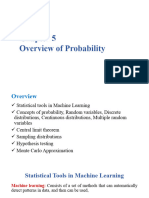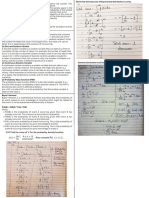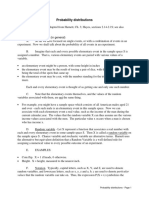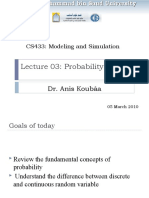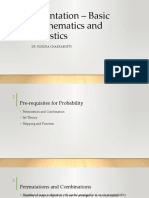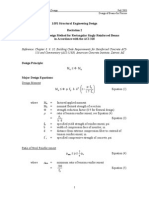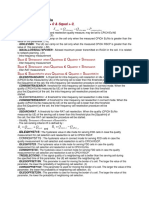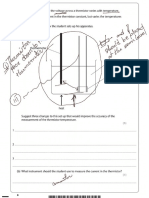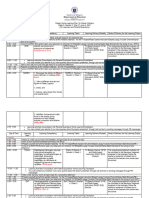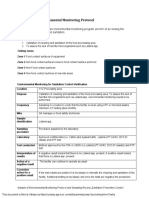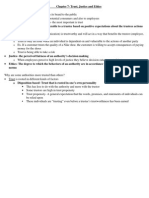0% found this document useful (0 votes)
22 views25 pagesLecture 3 Probability Distribution
This document defines key probability concepts and terms such as random variables, probability distributions, statistical independence, and conditional probability. It explains that the outcome of an experiment is a sample point, and when expressed numerically it is a random variable. Probability is defined as the number of favorable outcomes divided by the total number of outcomes. Probability distributions describe the possible values of a random variable and their probabilities. Conditional probability is the probability of an event given that another event has occurred. Statistical independence means the probability of one event does not impact the probability of another.
Uploaded by
londindlovu410Copyright
© © All Rights Reserved
We take content rights seriously. If you suspect this is your content, claim it here.
Available Formats
Download as PPTX, PDF, TXT or read online on Scribd
0% found this document useful (0 votes)
22 views25 pagesLecture 3 Probability Distribution
This document defines key probability concepts and terms such as random variables, probability distributions, statistical independence, and conditional probability. It explains that the outcome of an experiment is a sample point, and when expressed numerically it is a random variable. Probability is defined as the number of favorable outcomes divided by the total number of outcomes. Probability distributions describe the possible values of a random variable and their probabilities. Conditional probability is the probability of an event given that another event has occurred. Statistical independence means the probability of one event does not impact the probability of another.
Uploaded by
londindlovu410Copyright
© © All Rights Reserved
We take content rights seriously. If you suspect this is your content, claim it here.
Available Formats
Download as PPTX, PDF, TXT or read online on Scribd
/ 25













